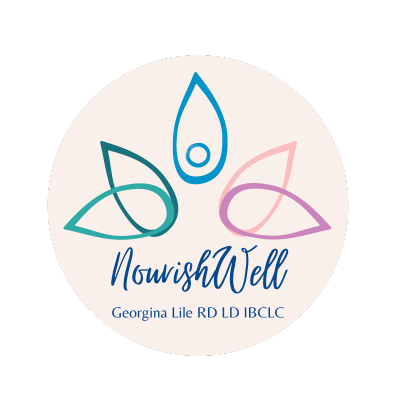BREASTMILK WORKS AS A COMMUNICATION TOOL BETWEEN MOM AND BABY
It's National Breastfeeding Month and I wanted to take this time to highlight one of the amazing mechanisms of breastmilk. An abundance of prior research has told us that breastfeeding impacts long term health for mom and babies, but as breastmilk research continues to expand, we are learning more about how this is accomplished. There are specific properties in breastmilk that act as communication tools. These mechanisms form developmental pathways and activate certain genes that promote health for life. Breastmilk has the ability to change the infant genome and the baby's genome can also change the composition of it's own breastmilk to meet his own needs. Two way communication occurs when baby receives the messengers in breastmilk and messages are returned to mom through the baby’s saliva.
One messenger found in breastmilk is messenger RNA. mRNA activates and regulates gene expression. They can program growth and development, modulate and shape the immune system, and regulate cell growth. They adjust and regulate appetite to meet the needs of baby’s day to day physiological growth. mRNA also promotes appropriate growth, maturation, and function of the infant gut. They work by turning certain genes in the baby’s genome on and off. The first 1000 days of life, starting from conception, are when the genome is most susceptible to nutritional influence. This can change and shift the way that we develop and change our health outcomes later in life. Breastmilk gene regulation is believed to decrease risk of obesity, type 2 Diabetes, Cancer, Alzheimers and Parkinsons later in life.
A drop of breastmilk has about 1 million live cells. Immune cells destroy harmful pathogens and produce antibodies when they encounter these pathogens. When a breastfeeding mother encounters pathogens, she immediately begins to produce the correct type of cells to destroy those pathogens in her breastmilk.
Infant saliva also contains these micro messengers. When baby nurses, saliva transfers the infant’s mRNA to mom. The mother’s body responds by changing the composition of milk to meet the developmental needs of the baby at that stage. Pathogens the baby encounters are also transferred to mom through saliva. The mother’s body immediately responds by creating specific antibodies for that pathogen. This is why breastfed infants don’t get sick as often and recover faster than non-breastfed infants.
Breastmilk is a living, dynamic fluid that is tailored to a specific infant’s needs. Only human breastmilk provides human specific instructions to meet a human infant’s specific needs each day. Compared to other milks, soy contains none of these properties and cow’s milk only contains bovine specific mRNA. The effects of breastmilk gene regulation during the critical first years of development last a lifetime. This is one more aspect of breastfeeding that cannot be replicated. When we get milk from another species or plant, we are getting a different set of instructions which can lead to different health outcomes. Lifelong health begins with breastfeeding. Breastfeeding matters. Every drop has a complex set of instructions for growth. Every drop counts.
